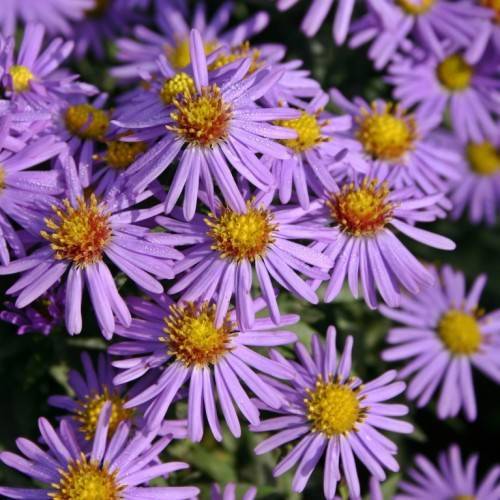
michaelmas daisy
Symphyotrichum novi-belgii 'Professor Anton Kippenburg'
Cycle:
Herbaceous Perennial
Watering:
Average
Hardiness Zone:
4 - 8
Flowers:
Flowers In Summer
Sun:
Full sun
Soil:
Well-drained
Fruits:
Fruits In Autumn Ready In Fall
Leaf:
Yes
Growth Rate:
High
Maintenance:
Low
Drought Tolerant:
Yes
Care Level:
Medium
watering
For Michaelmas Daisies, it is important to water deeply once or twice a week, making sure to saturate the soil. Water in the morning to allow plenty of drying time to avoid fungal diseases, and always avoid getting water on the leaves as much as possible. During hot, dry weather, the soil may require additional waterings. Check the soil every few days to make sure it is damp, but not too soggy. Reduce the frequency of watering during the winter months as the plants become dormant.
sunlight
Michaelmas daisies thrive best when growing in full sun to part shade. This species requires 6-8 hours of sunlight per day in order to flower and produce vibrant colors of purple, pink and white. For best results, it is recommended to plant the daisy in early spring and late summer. If placed in the garden in late spring, it may be slower to flower and produce the desired vibrant colors, although it should achieve full bloom by late summer.
pruning
Michaelmas daisy (Symphyotrichum novi-belgii 'Professor Anton Kippenburg') should be pruned in late winter, typically sometime between mid-February and mid-March. Pruning should involve removing any dead or damaged stems or buds. This species should only need light pruning, so it is best to save major pruning for the following summer or early winter. It is important to prune judiciously, as this species may spread if over-pruned and can take its time to grow back.
